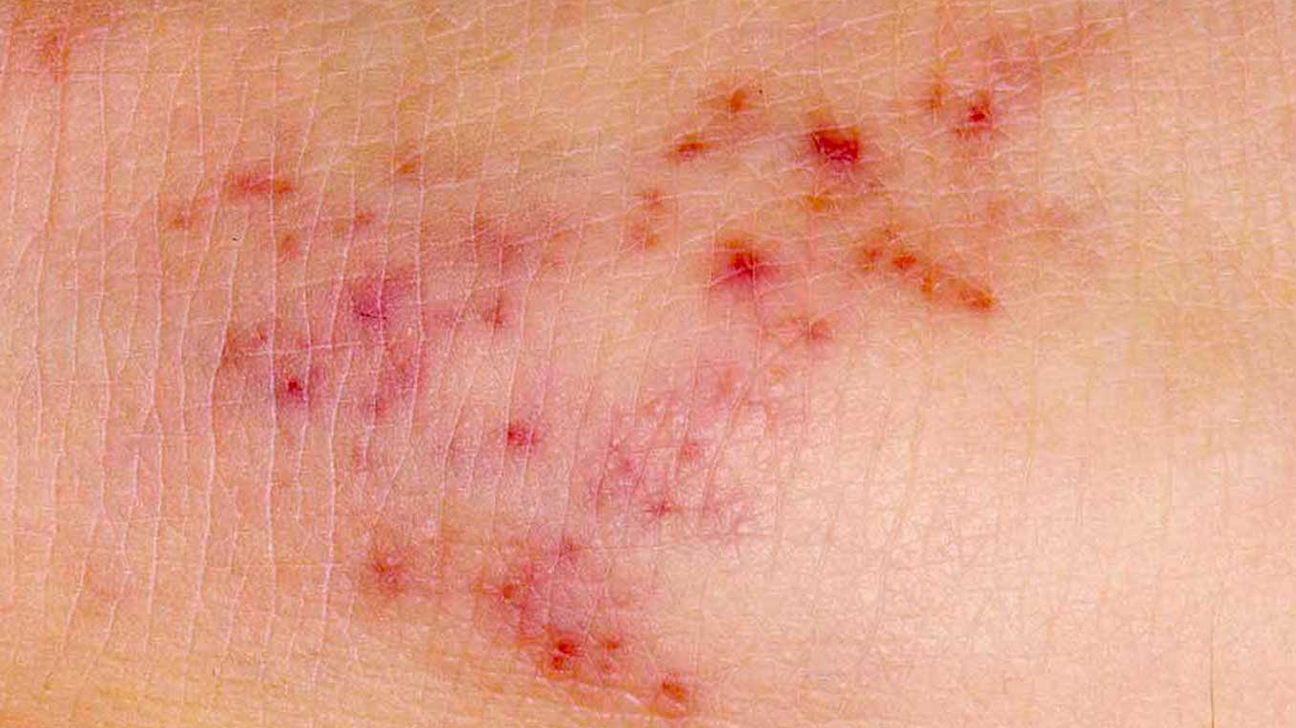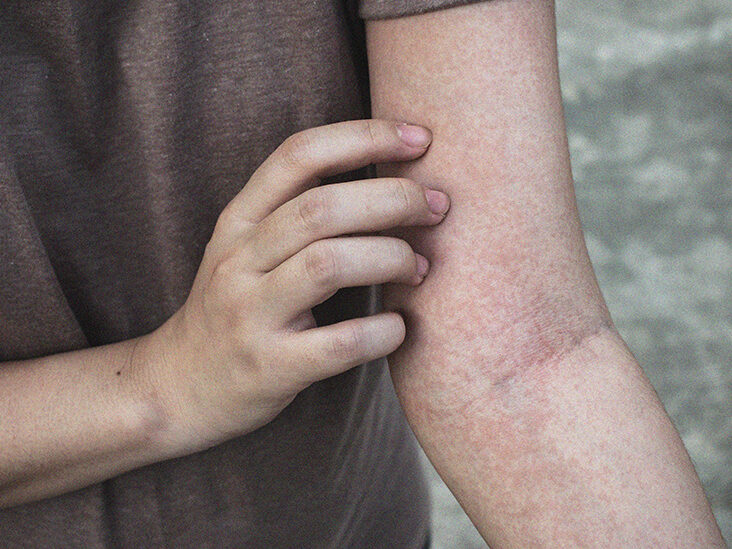Table of Contents
Why is Purpura non-blanching?
Non-blanching rashes are caused by small bleeds in the vessels beneath the skin, giving a purplish discolouration. Depending on the size of the individual lesions they can be defined as: Petechiae: x26lt;5mm diameter (figure 1). Purpura: 5-10mm diameter (figure 2).
What does blanching mean in medical terms?
Overview. In the French language, blanc translates to white. Blanching of the skin occurs when the skin becomes white or pale in appearance. Blanching of the skin is typically used by doctors to describe findings on the skin.
How do I know if my rash is blanching?
Blanching and non-blanching rashes
- Press against your child’s rash gently with the pads of your fingers, or place the side of a glass tumbler against the rash.
- Pull away your fingers quickly to look or look through the side of the glass. If the rash disappears or turns white it’s a blanching rash.
What does a Blanchable rash mean?
Rashes in Children can be divided into ‘blanching’ and ‘non-blanching’. The group called ‘blanching’ disappears when you press it. The group called ‘non-blanching’ doesn’t disappear when you press it. A ‘petechial’ rash is a non-blanching rash that is very small, like pin pricks.
Is purpura blanching or non-blanching?
Non-blanching rashes occur from bleeding from small blood vessels in to the skin or mucosa. Petechiae are non-blanching pinpoint spots which are less than 3mm in diameter. Purpura are non-blanching, greater than 3mm in diameter, and are sometimes palpable.
Do purpura and petechiae blanch?
A cardinal sign of a purpuric rash is that it does not blanch on pressure, unlike exanthema, telangiectases, or allergic rashes.
Why is a rash non-blanching?
Non-blanching rashes are skin lesions that do not fade when a person presses on them. They occur due to bleeding beneath the surface of the skin. By contrast, blanching rashes fade or turn white when a person applies pressure to them.
Is petechial rash non-blanching?
Petechiae are pinpoint non-blanching spots that measure less than 2 mm in size and affect the skin and mucous membranes. Petechial rashes are common and can be a significant cause for concern for parents and the interprofessional team.
What does blanching mean in hospital?
Blanching of the skin is when whitish coloration of the skin remains longer than normal after pressure is applied on an area of the skin. This occurs because normal blood flow to a given area (where blanching is being tested) does not return promptly. Blanching is considered a physiologic test.
How do you check for skin blanching?
Test your skin with the blanching test: Press on the red, pink or darkened area with your finger.The area should go white; remove the pressure and the area should return to red, pink or darkened color within a few seconds, indicating good blood flow.
Is skin blanching normal?
Blanching of the skin is usually a localized reaction and may be a sign that the skin tissue is not receiving its usual blood supply – poor circulation – due to swelling, cold, or other problems, such as insufficient blood flow through the vessels.
What does non blanching skin mean?
What are non-blanching rashes? Non-blanching rashes are skin lesions that do not fade when a person presses on them. They occur due to bleeding beneath the surface of the skin. By contrast, blanching rashes fade or turn white when a person applies pressure to them.
What does skin blanching look like?
Test your skin with the blanching test: Press on the red, pink or darkened area with your finger.The area should go white; remove the pressure and the area should return to red, pink or darkened color within a few seconds, indicating good blood flow.
What does it mean when a rash blanches?
What Is Blanching of the Skin? In the French language, blanc translates to white. Blanching of the skin occurs when the skin becomes white or pale in appearance. Blanching of the skin is typically used by doctors to describe findings on the skin.
Is it good for a rash to blanch?

Make sure your rash blanches Blanching means that you can make the color leave a spot by pressing on it. Tip: If you’re having a hard time telling whether or not your rash is blanching, take a clear drinking glass and press it up against the spot such that you can see it through the glass as you are compressing it.
Is a blanching rash serious?
Most viral rashes are harmless and will go away on their own. If you are concerned your child has measles, see a doctor. If your child has a fever and a rash that does not turn white (blanch) when pressed or they are very unwell, seek emergency medical care.
What is blanching vs non-blanching rash?
What are non-blanching rashes? Non-blanching rashes are skin lesions that do not fade when a person presses on them. They occur due to bleeding beneath the surface of the skin. By contrast, blanching rashes fade or turn white when a person applies pressure to them.
What does Blanchable mean in skin?
When you press on the skin, you force the blood out of the capillaries and the skin turns white. This is called blanching, blanched skin, skin blanches, or simply skin turns white. When skin is blanched, it takes on a whitish appearance as blood flow to the region is prevented.
What does it mean when a rash doesn’t blanch?
Non-blanching rashes are rashes which do not disappear with pressure, particularly using the ‘glass test’. Most children with a non-blanching rash who are well will not have a serious underlying cause. In many cases, a simple viral illness (often adenovirus) is the final diagnosis.
Why is purpura non-blanching?
Non-blanching rashes are caused by small bleeds in the vessels beneath the skin, giving a purplish discolouration. Depending on the size of the individual lesions they can be defined as: Petechiae: x26lt;5mm diameter (figure 1). Purpura: 5-10mm diameter (figure 2).
What are non-blanching spots?
A cardinal sign of a purpuric rash is that it does not blanch on pressure, unlike exanthema, telangiectases, or allergic rashes.
Are petechiae blanch?
Petechiae are pinpoint non-blanching spots that measure less than 2 mm in size and affect the skin and mucous membranes. Petechial rashes are common and can be a significant cause for concern for parents and the interprofessional team.
Does petechiae blanch on pressure?
By definition, petechiae do not blanche with pressure; additionally, remembering the cause of palpable versus nonpalpable lesions is paramount. Palpable (raised) purpura occurs in vasculitic diseases secondary to inflammation or infection.
What is the difference between Petechia and purpura?
Petechiae are small (1u20133 mm), red, nonblanching macular lesions caused by intradermal capillary bleeding (Figure 181-1). Purpura are larger, typically raised lesions resulting from bleeding within the skin (Figures 181-2 and 181-3).
Do petechiae fade when pressed?
Petechiae are pinpoint, round spots that appear on the skin as a result of bleeding. The bleeding causes the petechiae to appear red, brown or purple. Petechiae (puh-TEE-kee-ee) commonly appear in clusters and may look like a rash. Usually flat to the touch, petechiae don’t lose color when you press on them

